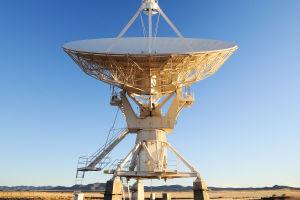Radar has found its way into various aspects of everyday life, revolutionizing how we interact with the world around us.
While its applications are widely known, radar technology seamlessly integrates into civilian life, offering a plethora of functionalities that touch upon transportation, weather monitoring, navigation, and even recreational activities.
In transportation, radar plays a fundamental role in ensuring safety and efficiency. For instance, radar systems are employed in modern automotive vehicles for features like adaptive cruise control, collision avoidance systems, and blind-spot monitoring. These radar-based systems provide drivers with real-time information about the proximity of nearby vehicles, pedestrians, or obstacles, helping to prevent accidents and mitigate risks on the road.
Radar is extensively used in air traffic control to monitor the movement of aircraft, ensuring safe takeoffs, landings, and flight paths. By accurately tracking the position and velocity of aircraft in real-time, radar enables air traffic controllers to maintain safe distances between planes and guide them through congested airspace with precision.
In marine navigation, radar aids ships and vessels in navigating through waterways, avoiding collisions, and navigating in adverse weather conditions. Marine radar systems use radio waves to detect the presence of other vessels, landmasses, or obstacles, providing navigators with essential information for safe and efficient navigation.
Weather radar is another critical application of radar technology in everyday life. Meteorological radar systems are used to monitor and track weather patterns, including precipitation, storms, and severe weather events. By emitting radio waves and analyzing their reflections off raindrops or other atmospheric particles, weather radar provides valuable data for weather forecasting, enabling meteorologists to issue timely warnings and alerts to the public.
Radar also finds utility in recreational activities and hobbies. For example, radar guns are commonly used in sports such as baseball, tennis, and cricket to measure the speed of thrown or hit balls. Similarly, ground-penetrating radar (GPR) is employed in archaeological surveys to detect buried artifacts, structures, or archaeological features beneath the ground's surface, aiding researchers in uncovering historical sites and understanding ancient civilizations.
Radar technology has made significant advancements in the field of medical imaging. Doppler radar, for instance, is used in healthcare for applications such as fetal monitoring during pregnancy, detecting heart rate irregularities, and diagnosing vascular diseases. Radar-based imaging techniques offer non-invasive and precise methods for assessing physiological parameters and detecting abnormalities in the human body.
In the realm of environmental monitoring and conservation, radar satellites are deployed to observe changes in the Earth's surface, including deforestation, urbanization, and natural disasters. By capturing high-resolution radar images from space, these satellites provide valuable data for environmental scientists, policymakers, and conservationists to monitor and manage natural resources, track changes in land use, and assess the impact of human activities on the environment.
Radar technology has become an indispensable tool in everyday life, enriching various aspects of modern society beyond its traditional applications. From transportation and navigation to weather monitoring and recreational activities, radar plays a multifaceted role in enhancing safety, efficiency, and quality of life. As technology continues to evolve, the everyday functions of radar will expand, shaping our world in new and innovative ways.


